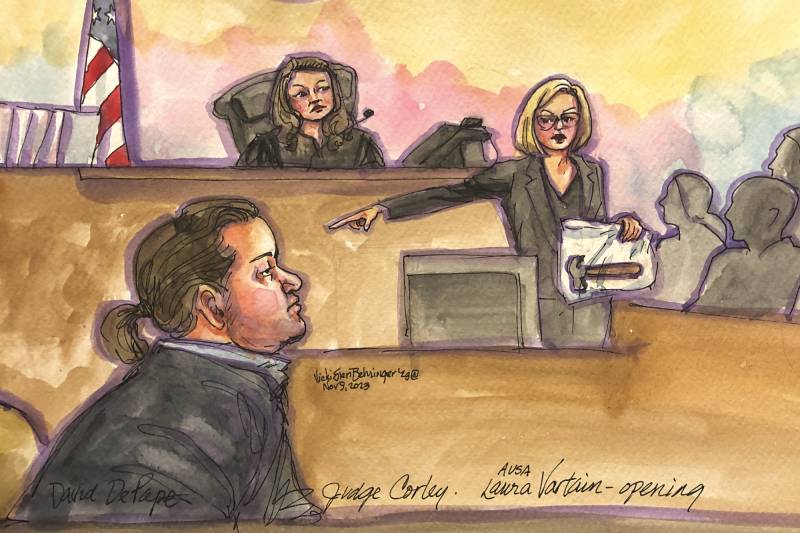That may mean DePape faces even more time in prison for related crimes. And DePape’s guilty verdict in his federal trial may lead to a plea deal in state court, one legal expert said.
“They may just find that there is a way to settle this without spending the time and resources necessary for a trial,” said Loyola law professor Jessica Levinson, adding that the case is likely an easier win for the prosecution.
Rory Little, a professor of law at UC Law SF, agreed. He said a second conviction may mean DePape serves a stint in state prison after federal prison or serves both sentences simultaneously, depending on what attorneys agree to.
“All those are up in the air,” he said.
DePape has yet to be sentenced in federal court, where he faces a maximum of 50 years in prison, according to the U.S. Attorney’s Office. A sentencing date may emerge in a federal post-trial hearing set for Dec. 13. As for his state charges, those carry a potential sentence of 13 years to life imprisonment.
Many of the elements of the state charges against DePape have already been proven by abundant video and other evidence – including DePape’s own repeated admissions – presented at the federal trial that ended with a guilty verdict on Nov. 16.
It was “right in front of cops, too,” DePape said to a paramedic on a recording from the night of the attack, which prosecutors played for a federal jury just two weeks ago.
“Cops watched me do it. You guys need evidence? There’s no denying what I did. The cops watched me do it,” he said on the recording.
Levinson said the mountain of video evidence introduced in federal court – which includes that interview – would almost certainly come into play again on the state level.
DePape broke into the Pelosi home a year ago, headed to the third floor where Paul Pelosi lay sleeping and woke him, asking for Nancy Pelosi, who was in Washington D.C. Paul Pelosi managed to call 911. Police officers arrived in the early hours of the morning on Oct. 28, 2022, and when they ordered DePape to drop the hammer he was holding, DePape refused and then bludgeoned Paul Pelosi three times in the skull.
DePape told police details of his plans after his immediate arrest.
“He said that he wanted to hold Nancy Pelosi hostage and get her to tell him the truth and that if she wasn’t going to tell him the truth, he would break her kneecaps,” San Francisco Police Department Lt. Carla Hurley testified previously.
Testifying in his own defense in the federal trial, DePape said he planned to wear an inflatable unicorn costume while livestreaming his interrogation of Pelosi.
Congress uniquely crafted the federal charges to guard against the assault of federal officials and require that the suspect had the “intent to impede, intimidate or interfere” with a federal official’s duties or “on account of” those duties.
In federal court, DePape’s defense attorneys unsuccessfully leaned into those requirements, arguing that he was not motivated by Nancy Pelosi’s actual duties but rather by incredible right-wing conspiracies that are detached from reality. On the witness stand, DePape described his descent into a conspiratorial rabbit hole by listening to hours and hours of right-wing YouTube videos while he played video games.
That defense strategy echoes ones used largely unsuccessfully by attorneys defending Jan. 6, 2021 insurrectionists earlier this year, including arguments that focused on defendants’ conspiratorial leanings and portrayed them as unaware of the “official duties” of their targets.
By contrast, only one of DePape’s state charges hinges on Nancy Pelosi’s status as a U.S. representative — threatening the life or serious bodily harm to a public official.
The rest are charges that could’ve been brought against him for attacking anyone.
This is a breaking story and may be updated.

